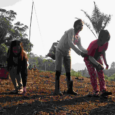Save the Children reported on Saturday that the COVID-19 pandemic has so far affected 99 percent or 2.3 billion of vulnerable children who live in 186 countries that implemented some form of restrictions such as lockdown and school closures.
In the global report “Protect a Generation: The impact of COVID-19 on children’s lives,” Save the Children said that although children are not at a high risk of direct harm from the virus, they are disproportionately affected by its hidden impacts.
The report cited concern that the number of children from poor households may increase to 117 million globally this year as the COVID-19 health crisis transitioned into an economic crisis.
Save the Children spoke to more than 8,000 children and 17,000 parents and caregivers in 37 countries, including the Philippines, on the impact of COVID-19 in their lives.
“It is clear that the most deprived and marginalized children are being hit the hardest by the pandemic, exacerbating existing inequalities and pushing the most vulnerable children even further behind,” said Inger Ashing, Chief Executive Officer of Save the Children International.
“For too many children, missing school means that they may never return; a parent losing his or her income means children go hungry; and increased pressures and stress on families mean that children experience more violence,” added Ashing.
The unprecedented disruption to children’s education has affected 1.6 billion learners globally, and at least 10 million of them will not be able to return to school, mostly girls and those marginalized and deprived children who lack access to computer technology needed for distance learning, and support at home, said the report.
Atty. Alberto Muyot, Chief Executive Officer of Save the Children Philippines said the global report reflects the situation of millions of Filipino children from poor households, including those with disabilities and living in marginalized areas, who continue to suffer in silence from the devastating impact of the pandemic.
“Children’s rights to continue learning is critical amid the pandemic and must be fulfilled not only through access to online technology but the support of parents, caregivers, and communities,” said Muyot.
The report showed that less than one percent of children from poor households said they have access to the internet for distance learning, despite more than 60 percent of national distance learning initiatives relying on online platforms.
As children adjust to the new learning set-up at home, at least 40 percent of children from poor households said that they need help with their schoolwork, but no one to help them. Children without access to help with their learning will be left further behind they return to school, said the report.
Violence against children was already at a record high prior to the pandemic with one billion children aged between 2 to 17 who experienced physical, sexual, or emotional violence or neglect each year.
COVID-19 threatens to exacerbate the risk of violence against children, particularly for those who are already at greater risk of violence – including girls, poor children, children with disabilities, and those in fragile contexts, according to the report.
Income loss and school closures heightened such violence, according to the report.
Save the Children called on governments to ensure children have access to equitable health and nutrition systems and child protection services including gender-based violence and mental health services.
The organization is also seeking support for the fulfillment of the rights of children to access learning and to be listened to and involved in the decision-making processes that affect them.




